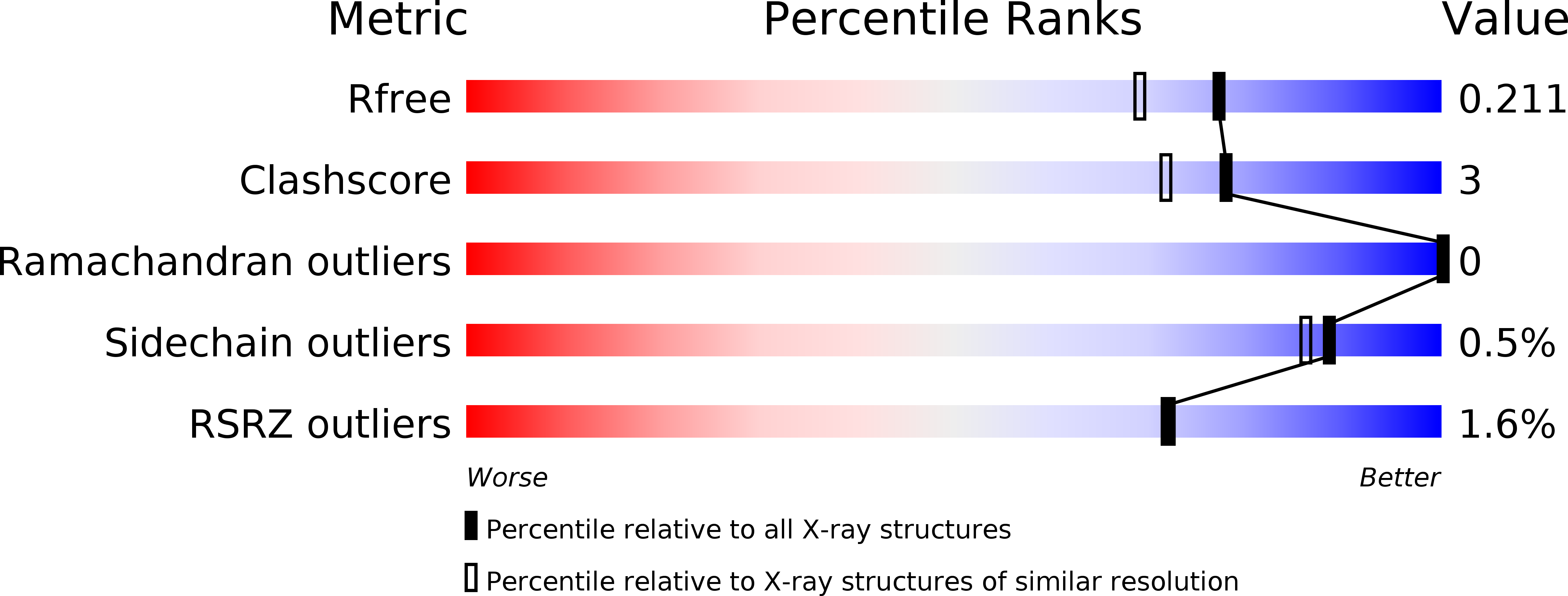
Deposition Date
2017-01-17
Release Date
2017-10-25
Last Version Date
2024-10-16
Entry Detail
PDB ID:
5WZ4
Keywords:
Title:
Crystal structure of Mycobacterium tuberculosis VapC20 (Rv2549c), Sarcin-Ricin loop cleaving toxin
Biological Source:
Source Organism:
Mycobacterium tuberculosis H37Rv (Taxon ID: 83332)
Host Organism:
Method Details:
Experimental Method:
Resolution:
1.78 Å
R-Value Free:
0.21
R-Value Work:
0.17
R-Value Observed:
0.17
Space Group:
P 21 21 21


